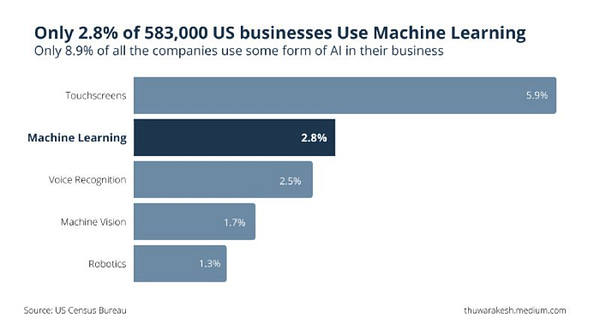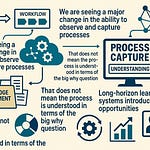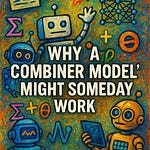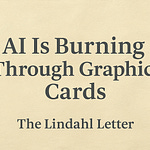This is the third week of including audio integration as a part of the weekly Substack post for The Lindahl Letter. Recording a reading of the first section of the post that contains the main content is easy enough to achieve using Audacity with a basic use of both the noise reduction and loudness normalization effects. Between those two effects it will keep a noise floor in place to keep anything from being too loud during the recording. For those of you who are curious to complete the recordings I’m using a Blue Microphones Yeti X professional microphone on my desk in my office. It has proven to be a little more dynamic than the Samson microphone that normally accompanies my audio recordings.
My very high level introduction to the creation of a machine learning syllabus would center on 8 core topics:
Bayesian optimization
Deep learning
Classic ML algorithms
Classic neural networks
Neuroscience
Reinforcement learning
Graph neural networks
Ethics (fairness, bias, privacy)
I would probably break out the systems and tools part of the conversation to a separate course or keep that content included as supplemental reading. Getting to the point of being able to work toward an 8 topic introduction to machine learning involved really digging into a few other machine learning course introductions. I’m going to share links to six of them with you today, but that should not be considered an exhaustive list. It is just a list of content that caught and held my attention enough that I felt curating it in a list would be helpful.
Stanford CS229: Machine Learning [1]
MIT Opencourseware: Introduction to Machine Learning [2]
NYU Introduction to Machine learning [3]
Tufts CS COMP 134 Intro ML [4]
Berkeley CS 189/289A Introduction to Machine Learning [5]
Washington: CSE/STAT 416, Summer 2020: Introduction to Machine Learning [6]
Taking a step back and thinking about the most direct solution moving forward on this path I would probably just assign a class or at least highly recommend the students to read a book called, “Artificial Intelligence: A Modern Approach,” by Stuart Russell and Peter Norvig [7]. The current version appears to be the 4th edition [8]. My bookshelf has a copy of the 3rd edition and that is the one that I picked up and started reading a few years ago. Oddly enough during the course of reading about the 4th edition the Pearson website suggested that I read, “Quantum Computing Fundamentals,” [9]. That would take this dialogue into another direction. At some point, that pivot might happen for a few weeks. I did check eBay to see if anybody was selling a used copy of that book on quantum computing. Nobody has let go of that tome of quantum goodness just yet. At some point, I’m sure one will show up for resale or my research interests will veer that direction enough to justify the price.
Getting back to the main point of talking about that book by Russell and Norvig. Machine learning elements always feel like a foundational build up to work with more advanced topics in artificial intelligence. Machine learning models that are able to handle a multitude of problems are potentially becoming more likely. Week 79 to 86 of this newsletter will be devoted to creating outlines or a first draft of what the 8 core topics in my proposed syllabus would need to contain. I’m going to try to intermix a lot of artificial intelligence related observations into the machine learning focused content for each of those Substack posts. Bringing the two content sets together in a very intentional way should provide a solid written outcome.
Links and thoughts:
“Newegg... More Like Rotten Egg! - WAN Show February 11, 2022”
“AI Show Live - Episode 51 - NVIDIA DeepStream development with Microsoft Azure”
“HyperTransformer: Model Generation for Supervised and Semi-Supervised Few-Shot Learning (w/ Author)”
“[ML News] Uber: Deep Learning for ETA | MuZero Video Compression | Block-NeRF | EfficientNet-X”
Top 5 Tweets of the week:


Footnotes:
[1] Stanford University. (n.d.). Syllabus and Course Schedule. CS229. Retrieved February 13, 2022, from https://cs229.stanford.edu/syllabus.html
[2] Massachusetts Institute of Technology. (n.d.). Introduction to Machine Learning. MIT OPENCOURSEWARE. Retrieved February 13, 2022, from https://ocw.mit.edu/courses/electrical-engineering-and-computer-science/6-036-introduction-to-machine-learning-fall-2020/
[3] Mehryar Mohri. (n.d.). Introduction to Machine Learning. Retrieved February 13, 2022, from https://cs.nyu.edu/~mohri/mlu11/
[4] Hughes, M. (n.d.). Introduction to Machine Learning. Syllabus. Retrieved February 13, 2022, from https://www.cs.tufts.edu/comp/135/2020f/index.html
[5] Shewchuk, J. (n.d.). CS 189/289A Introduction to Machine Learning. Retrieved February 13, 2022, from https://people.eecs.berkeley.edu/~jrs/189/
[6] Swamy, V. (n.d.). CSE/STAT 416, Summer 2020: Introduction to Machine Learning. Retrieved February 13, 2022, from https://courses.cs.washington.edu/courses/cse416/20su/
[7] Russell, S., & Norvig, P. (n.d.). Artificial Intelligence: A Modern Approach, 4th US ed. Retrieved February 13, 2022, from http://aima.cs.berkeley.edu/
[8] Link to buy the book: https://www.pearson.com/store/p/artificial-intelligence-a-modern-approach/P100000291856/9780137505135
[9] Link to buy the book: https://www.pearson.com/store/p/quantum-computing-fundamentals/P100002994167/9780137460328#
What’s next for The Lindahl Letter?
Week 58: Teaching or training machine learning skills
Week 59: Multimodal machine learning revisited
Week 60: General artificial intelligence
Week 61: AI network platforms
Week 62: Touching the singularity
I’ll try to keep the what’s next list forward looking with at least five weeks of posts in planning or review. If you enjoyed reading this content, then please take a moment and share it with a friend.
















